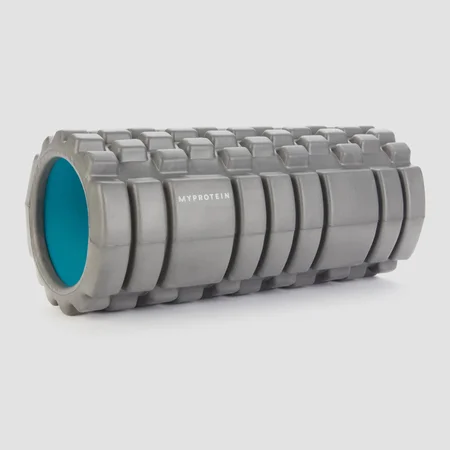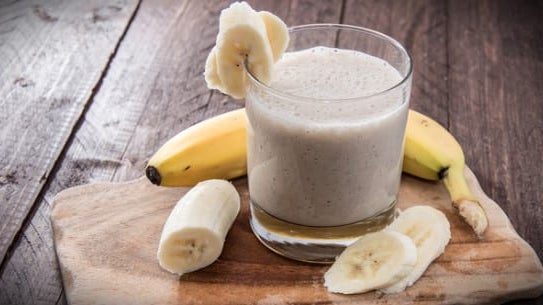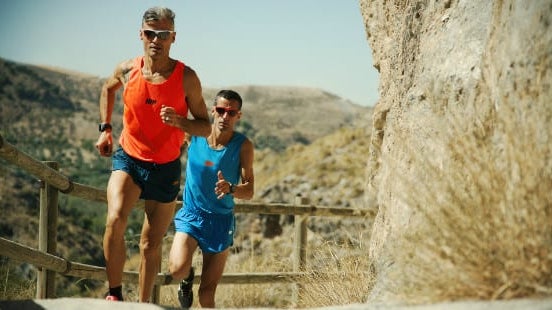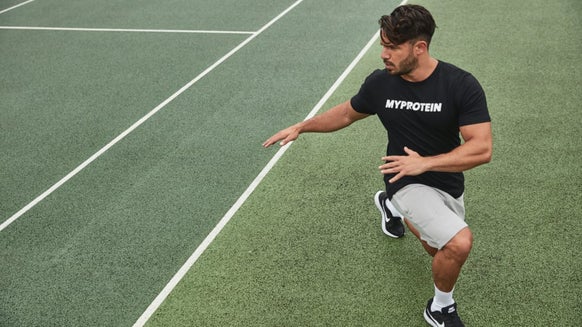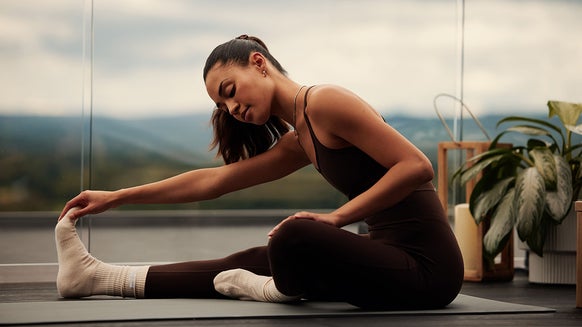PNF Stretching Exercises | Improve Training with Proprioceptive Neuromuscular Facilitation
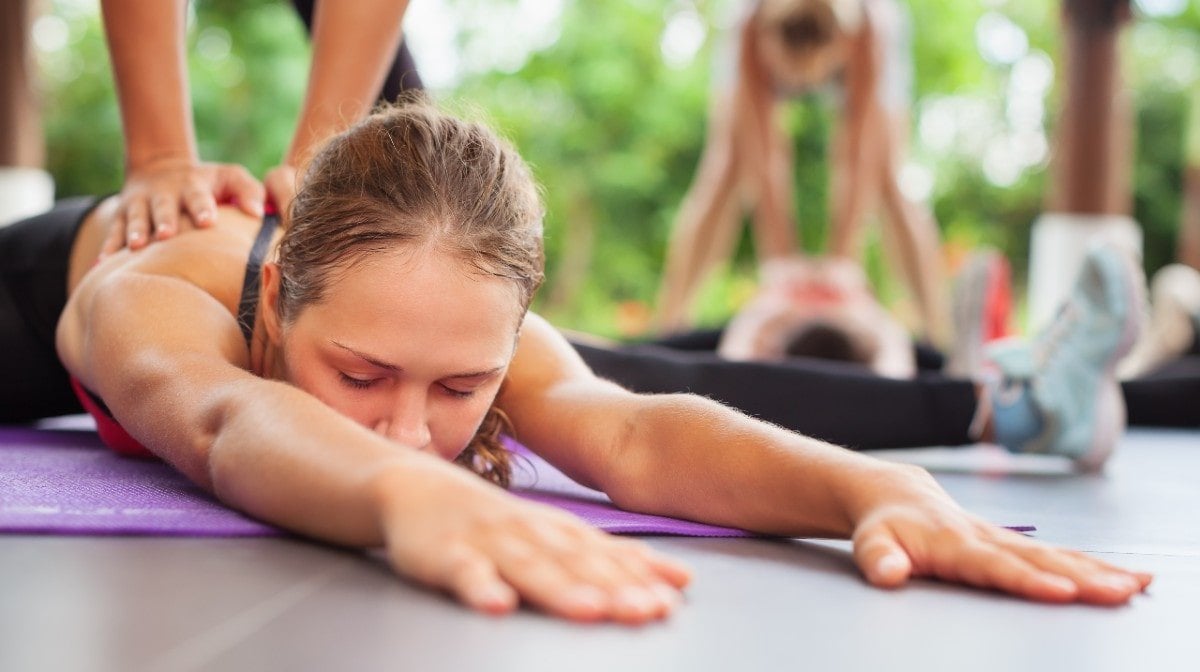
PNF Stretching Definition
PNF Stretching stands for Proprioceptive Neuromuscular Facilitation stretching – a method regarded as an advanced stretching technique. PNF involves increasing active and passive range of movement via a combination of stretching and muscular contractions.

What is PNF Stretching?
There are 3 main types of PNF stretching – Contract-Relax, Hold-Relax and Contract-Relax-Antagonist-Contract. Don’t let the names intimidate you – performing these techniques is very straight forward once you understand the methods. Each of the following methods involves some combination of stretches and contractions of the muscle. In order to be performed effectively, PNF requires a partner or a static object for the contraction phase of the technique.
Contract-Relax
Otherwise referred to as the “active-assisted” method relies on the golgi-tendon organ – a sensor in the tendon that detects load, and the concentric contraction to help relax the muscle, allowing for greater range of movement to be achieved in subsequent passive stretches.
An example for this could include the following:
- Client lying supine on the floor, with one leg held perpendicular to the floor in a passive stretch, flexed at the hip only. This stretch is maintained by the partner for up to 10-15 seconds, although some evidence suggests 3-6 seconds is sufficient.
- The client then concentrically contracts their hamstrings in a controlled manner through a full range of movement, until the foot reaches the floor.
- A new passive stretch is performed, as with the first step, only a greater range of movement can now be achieved. This can be repeated around 3 times for optimal acute gains in flexibility.
Hold-Relax
This method utilises an isometric contraction instead of an isotonic one (the muscle does not change length when it contracts, compared to the contract-relax example where the muscle concentrically shortens as it contracts). Again, this helps the muscle to relax and ultimately allows us to facilitate a greater range of movement being achieved.
Using the hamstrings example again, this method would be performed like so:
- Client is lying supine on the floor with one leg flexed at the hip to be perpendicular with the floor. Their partner holds their leg in this position to maintain a stretch for 10-15 seconds.
- The client then isometrically contracts the hamstrings, against resistance/the block created by their partner.
- The muscle can then be stretched to a greater degree to facilitate the adaptation of increased flexibility.
Contract-Relax + Antagonist-Contract
The first part of this stretch is similar to the hold-relax whereby the muscle being stretched is isometrically contracted for 3-6 seconds, then the antagonist muscle will immediately contract for 3-6 seconds. The joint is then pushed into its new range.
An example of this would be:
- Client is lying supine on the floor with one leg flexed at the hip to be perpendicular with the floor. Their partner holds their leg in this position to maintain a stretch for 10-15 seconds.
- The client then isometrically contracts the hamstrings, against resistance/the block created by their partner.
The client then contracts the antagonist, which would be the quadriceps in this instance. This would be done for 3-6 seconds. - The agonist muscle (hamstrings) can then be stretched to a greater degree to facilitate the adaptation of increased flexibility.

PNF Stretching Benefits
Adding just several minutes of PNF stretching each week for muscle groups susceptible to tightness can reduce this side effect of hard training and allow flexibility to be maintained whilst simultaneously reducing the risk of future injuries.
There is also evidence to show that, if performed after exercise, PNF stretching has the potential to increase power output and athletic performance, and this benefit can be maintained with just 2 sets of PNF stretching each week.
1. PNF stretching can reduce the risk of injury
Certain muscle groups are notorious for being inflexible in many individuals, meaning that if a movement were to exceed their current tolerance for range of movement, then injuries such as muscle strains and tears could occur. An example of this may include sprinting, where the hamstrings are taken through a large range of movement, with the need to eccentrically and concentrically produce force to control the lower limb. Performing PNF stretching for this muscle group can allow it to have a greater range of movement, reducing the risk of such injuries.
2. PNF is designed to improve your range of movement
PNF stretching is proven to be one of the most effective methods of increasing muscle length, and thus flexibility. This ultimately means that a greater range of movement is able to be achieved at a given joint, since tight soft tissue structures such as muscle will not inhibit the joints’ ability to move freely.
3. PNF stretching can help you achieve functional goals
If you are going to the gym so that you can tackle day to day life, then PNF stretching may be your friend. As previously mentioned, this type of stretching can help to increase range of movement present at a joint. In turn, this can help to reduce adverse symptoms such as pain and poor posture, which may be associated with long periods of sitting. Additionally, there is evidence to support that PNF can actually help increase muscular power, which is of course advantageous for athletic performance. Ultimately, PNF can help you to perform better physically, both in day-to-day life and in sport.
4. Great for injury rehabilitation
Following injury and periods of inactivity, PNF can help to restore the range of movement previously present at a joint. This can accelerate your rehabilitation for injuries such as muscle strains or when a joint has been immobilised due to fractures or surgery.
Try this full body stretch:
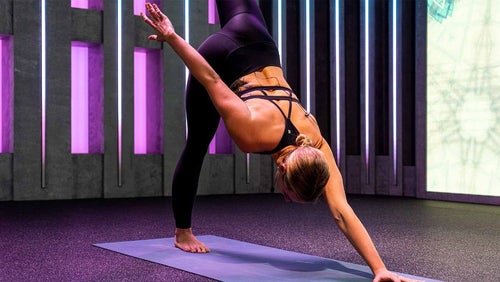
Bad DOMS? Try This Full-Body Stretch From Fiit
Moves to make your muscles feel better from Fiit.
How Does PNF Stretching Work?
PNF stretching helps to increase flexibility via something known as autogenic inhibition – this is the process by which a prolonged muscular contraction in the PNF technique causes inhibition to the excitability of the nerves supplying the target muscle, which results in the target muscle relaxing and allowing a greater stretch to be achieved. Long-term adaptations to flexibility training are due to physiological changes to the structure of the muscle, where the arrangement of sarcomeres (the basic component of a muscles structure) is altered to increase the length of the muscle.
It is also worth noting that although there are some claims suggesting that stretching pre-exercise slightly decreases power output, the reported power deficits returned to normal levels 15 minutes after stretching and there has been shown to be absolutely no long-term decrease in strength from this stretching technique. In summary, it may be best to avoid this stretching technique 15 minutes prior to exercise or an athletic event.
Improve your flexibility with these stretching exercises:
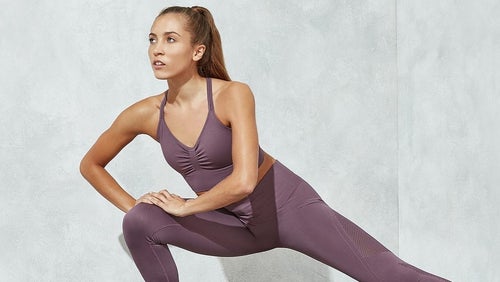
Stretching Exercises to Improve Flexibility
Improve your flexibility and loosen up those muscles with these exercises.
PNF Stretching Exercises
PNF stretching will require a partner to oppose the movement, or alternatively, it can be performed using a static object as a block. If using a partner, make sure they are strong enough to be able to effectively oppose your muscles for the selected movement!
1. Hamstrings
- Lie on your back on a bench, bed, or the floor. Have your partner raise your leg to be stretched upon their shoulder.
- Make sure your knee remains locked straight – you should only be flexed at the hip. Have your partner slowly push your leg until you feel a stretch in the hamstrings.
- Hold this position for 10-15 seconds to allow your muscles to relax into the stretch.
- Then, with around 50% of your maximum effort, contract your hamstrings to push your leg down into your partner’s shoulder. The knee should not flex during this phase. They should keep your leg in a static position while you press down for 7 seconds.
- At the end of the 7-second contraction, relax your leg, and allow your partner to gently increase the stretch on your leg by a few centimetres.
- Hold this new position for 10-15 seconds. Repeat the process up to 4 times.
2. Quadriceps
- Lie on your front with a pillow under the knee of the leg to be stretched.
- If performing alone, wrap a towel around your ankle, then pull the towel to help increase the stretch. Alternatively, have your partner push your heel towards your glutes to stretch the quads.
- When you feel the stretch on the front of your thigh (quadriceps), hold this position for 10-15 seconds.
- Use 50% of your maximum effort to attempt to straighten your leg/extend your knee for 7 seconds. This should be performed isometrically with no movement.
- After 7 seconds, relax and increase the stretch.
- Hold this new position for 10-15 seconds. Repeat up to 4 times.
3. Calves
You can perform this one either with a partner or by using a strong towel or belt.
You can perform this action either with the knee straight (emphasis on gastrocnemius) or with the knee slightly bent (emphasis on soleus).
- Sit with your knee in the chosen position.
- If you can’t reach your toes, wrap a towel around your forefoot and pull back as if you’re trying to pull your toes up towards you. When you feel a stretch in the calf, hold for 10-15 seconds.
- With 50% of your max effort, push against the towel with your foot and hold for 7 seconds.
- At the end of the 7 seconds, relax, and increase the stretch.
- Hold this new position for 20 seconds. Repeat up to 4 times.

4. Pectorals
- Sit upright on a bench and clasp your fingers behind your head.
- Have your partner stand close behind you and pull your elbows back by locking their elbows over yours.
- Hold this stretch for 10-15 seconds.
- At 50% of your effort, contract as if you’re trying to bring your elbows together.
- Hold for 7 seconds, then relax, and breathe out as your partner increases the stretch.
- Hold this new position for 10-15 seconds. Repeat up to 4 times.
Take Home Message
PNF stretching offers a highly effective method of increasing flexibility at any joint, although some stretches may take a bit more creativity to get it right! It’s important that your muscles are sufficiently warm prior to performing this type of stretch, or else these strategies may result in injury on a cold muscle.
Use PNF stretching to increase your flexibility and athletic performance!
READ MORE HERE:

